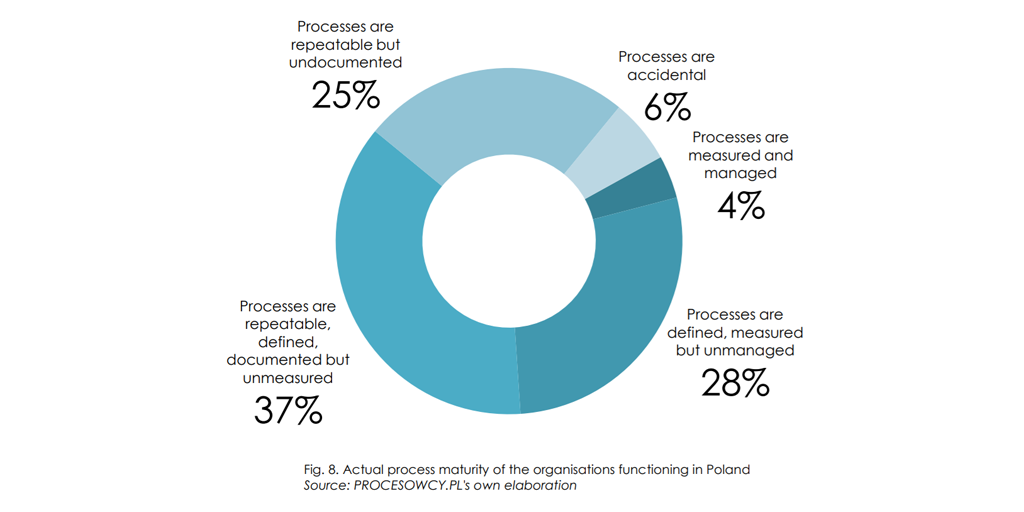Running Effective Retrospectives
Part I: 4 Benefits and 6 Obstacles to Consider

If you’ve been part of an agile team for any length of time, you’ve probably sat through your share of sprint retrospectives. How you feel about them probably depends on how good your organization was at fostering an environment where openness and honesty is balanced with rigor and process, to turn effective retrospectives into a driving force within the company.
Agile methods continue to be the strategy of choice for most budding software companies, and increasingly, organizations outside of tech. According to a 2017 report from the Project Management Institute, 71% of organizations report using agile approaches. This is due in part to the fact that agile projects are 28% more successful than traditional projects, according to PwC.
Effective retrospectives can be vital to your team’s health and ability to execute. They can draw attention to beneficial changes that should be made, help to identify process improvements for the next sprint retrospective meeting, and push your team toward a more ideal process for future sprints on the way to project completion.
But a poorly-run retrospective meeting? These are all too common and so detrimental.
At best, a poorly-run sprint retrospective meeting is routine and boring, failing to hold everyone’s attention. Without active participation, the team can’t filter out the noise to identify real-world process improvements that could have a profound impact.
At worst, a poorly-run retrospective meetings actively sabotages the goodwill your team has built up with each other. Without realistic suggestions for improvements, a poorly-managed retrospective can quickly turn into a blame game or a gripe session for the most vocal members of your team.
It’s a common problem for many companies, but that’s exactly what we don’t want— retrospective meetings that devolve into something that is harmful to project outcomes.
Instead, we want retrospective meetings to produce something tangible; whether that “something” is positive change to your process, a better understanding of project goals among your teams, or simply the camaraderie that comes from a collaborative and productive meeting that works to everyone’s benefit.

Benefits of Effective Sprint Retrospective Meetings
Understanding the why behind retrospectives can help flesh out a plan that helps you to meet those goals. Knowing what you want to facilitate and accomplish from a sprint retrospective meeting will help you to outline the correct beats to hit in the meeting, and steps to take to ensure you check the right boxes.
1. Effective Retrospectives Facilitate Transparency
In Quantum’s Workplace 2015 Employee Engagement Report, the top engagement drivers included trust in leaders and a belief in the future success of the organization. Effective retrospectives give your teammates the time and platform to address details that they each deem pertinent, and address questions that they might have about the previous phase.
Teammates can discuss problems and share stories with one another that others can use to improve. Creating a safe space where opinions can be shared without blame not only allows you to gather more feedback, it creates a more comfortable environment for your employees. A transparent and open retrospective meeting can function as a clearing-the-air session, without devolving into complaint and ridicule.
These are a broader, organization-wide representation of how transparency affects the way employees feel about their company, and ultimately impacts their productivity. Creating transparency in retrospectives helps set the tone for the project and can improve employee engagement within your team.
2. Agile Retrospectives Create a Collaborative & Communicative Environment
In an agile practice, the product owner should not be the only person that has a say in the way things are run. In fact, that would be a huge mistake. They aren’t the ones getting their hands dirty in the daily processes that ultimately shape the outcome of the project. Properly-run, effective retrospectives empower your team.
The precedent set in effective retrospectives will reverberate throughout your organization. 39% of employees state they believe that people in their organization don’t communicate enough. A more collaborative group meeting can lead to designing more collaborative processes, and an environment that is open to taking the thoughts and feelings of every team member into account.
Over time, this will lift the spirits of your team. They will each feel like their analysis is receiving due consideration, whether or not their recommendations are prioritized. A great retrospective brings your team closer together by helping each member voice their opinions in a transparent and communicative environment.
3. Retrospective Meetings Identify Issues Early
A beneficial retrospective after a sprint can reshape the outcome of entire projects. Retrospectives are an excellent tool for risk mitigation. They allow you to discover and remedy issues as early in the process as possible. By enabling your team to share openly in a transparent environment, they will be more likely to identify and point out issues in your project management or production processes.
In identifying small issues early, the small, incremental changes that come from remedying those issues can later lead to much more impactful outcomes. Fixing small issues adds up over time.
4. Sprint Retrospectives Pinpoint Process Improvements
Perhaps the most important benefit of a great retrospective meeting comes in the form of improvements to your process. Agile principles heavily embrace constant education and improvement, and effective retrospectives serve as a primary tool in this process of continuous improvement.
Did you know that only 4% of companies measure and manage their documented processes?

During retrospective meetings, your employees can propose solutions to issues that have been identified throughout the meeting, find opportunities to improve your processes, and identify changes to the project that would be beneficial. Over time, these process improvements will improve the effectiveness of each sprint, and result in better cumulative outcomes.
Common Sprint Retrospective Obstacles to Conquer
Seeing the benefits made plain, you might think that running effective retrospectives is a simple task, but most find that not to be the case. Here are a few common challenges that you’ll have to account for (and actively work against) to reach your goals for your sprint retrospective meeting:
1. Failure to Understand the Purpose of a Sprint Retrospective
Do you know how many teams get together for 5-10 minutes after a sprint, discuss a few issues on a surface-level, then split and call it a retrospective? Way too many. Those aren’t retrospectives; they are water cooler chats. Some would say they are a complete waste of time.
Don’t call something a retrospective if you aren’t going to adhere to the core principles of what a retrospective is, and what they are supposed to accomplish. You risk spoiling the team’s perspective on what they can actually accomplish.
To help your team understand the purpose of the retrospective:
- Remind your team about the purpose of the retro at the start of the meeting: to reflect on previous work, identify patterns in your processes, decide what’s important and then discuss what to do to improve.
- Share a retrospective guide before the meeting, to give some context
2. Too Many Opinions or Too Much Feedback During a Retrospective
Having too many cooks in the kitchen is a very common problem working against effective retrospectives. It’s tempting to invite as many people as possible to collect more feedback and get more ideas flowing, but that can be detrimental if left unchecked.
Not only will inviting too many employees to the meeting lead to findings that are too diverse and difficult to manage, but it could also threaten the psychological safety you’ve developed that allows everyone to share their thoughts without feeling judged.
While it can be good practice to include stakeholders—or even customers!—in order to gauge how well the team is serving them, avoid bringing in folks who aren’t connected enough to the team to engage in the feedback process together. If senior executives are invited who evoke deference, it can be helpful for management to offer a moment at the beginning of the meeting to establish safety and encourage honesty. However, if you feel safety and honest isn’t possible, err on the side of excluding unnecessary participants.
Keep these tips in mind:
- Include as many stakeholders as possible
- Limit size to maintain anonymity
- Experiment with async retrospectives or phases to include more voice
- Provide more options for larger teams to interact outside of the retro
- When in doubt, start small and grow
3. Relying on Insufficient Tools to Run a Retrospective
With a focus on prioritization, it’s important that you have the right tools to help you stay organized and delegate tasks strategically.
A tool that is capable of capturing and organizing all of the feedback on your team is important. When your team invests their time in a retrospective, they don’t want their reflections, feedback or discussions to be lost due to ineffective note taking or bad follow-ups. Don’t fall into the trap of relying on email or other systems to piece together a plan after the meeting closes.
A tool that organizes the thoughts and recommendations from every team member into a digestible format—like the Parabol Retro Meeting Summary—can really improve the impact that the retrospective has on your organization. It also makes it easier for you to analyze engagement and contributions after the retrospective ends, giving each member of the team their due credit.
4. Failing to Evaluate Ideas During the Retro
We’ve all been there. You come out of a meeting with a million ideas for improvement, but no viable plan for executing those improvements. Without proper prioritization, most of those changes will be lost in the weeds, or completely forgotten before your next retrospective.
That’s what the voting phase of a retrospective is meant to solve – drawing on the collective intelligence of the group to identify what challenges are most important to the team.
When you reach the discuss phase and start evaluating solutions, you can draw on a similar process. Ask the team to vote (with reactions, their voices or raising hands) on the solutions they most want to explore.
Sometimes, teams can be overly ambitious in what they take on – committing to too many efforts during a retrospective or to solutions that are too large. Smaller efforts that follow the SMART goal framework are typically a better investment of time than larger goals that require a lot of layered coordination. When a proposed change or action feels too large to ever complete, that’s a good time to ask, “what’s the smallest first step we can take?”
5. Low Retrospective Engagement Among Teammates
Teammates aren’t always open to show their work and lodge complaints. Still, you have to get everyone involved, and feedback from those that are less outgoing is no less useful than from those that are always willing to share. According to Business2Community, organizations with high employee engagement outperform those with low engagement by 202%.
You should not only encourage everyone to share their thoughts, but also ensure that you are creating an environment that is comfortable enough for people to share without worry.
To get your team engaged:
- Start with an icebreaker – Research shows that participants who speak once are likely to speak again. Get inspired with these questions.
- Offer your own honest feedback – As a leader, you have to set the tone. Come to the meeting with your own list of process improvements and issues to touch on, and others will be more likely to share.
- Keep feedback anonymous – Many team members don’t share feedback because they’re concerned about retaliation or social awkwardness. Anonymity allows everyone to speak freely.
- Experiment with different techniques – Different retrospective prompts will elicit different reactions. By varying the templates you use, you can spark different sorts of conversations, or otherwise wake your team up from the humdrum of the practice.
6. Not Reviewing Past Action Items from the Sprint or Project
What good is a retrospective if you never evaluate the success of the previous sprint? Were the changes that you discussed and implemented successful? What could be done better in your current sprint than in the previous one?
While you don’t want your retrospective to get stuck in nostalgia, a solid review of past efforts can help to inform future meetings.
Some ways to incorporate this:
- Take time to review your sprint board or tasking tools at the start of your retrospective, or some time beforehand
- Include a prompt to recognize accomplishments in your retrospective template
- Conduct a Sprint Review meeting or process ahead of the retrospective, where you look at what you meant to accomplish and what actually got done
- Consider running a retrospective about your retrospective process, to examine if it is serving you and give the team an opportunity to decide how to improve
A Critical Component of Agile Success
Retrospectives play a critical role as post-sprint milestones for any large-scale project. Knowing how to get the most out of each meeting will help you to identify points for improvement, collect more feedback from your teams, and position your next sprint for success. With careful planning, and an understanding of the goals and potential obstacles of each retrospective, you can help to facilitate a transparent and communicative collaboration that works to everyone’s benefit.
This article is the first in a multi-part series on planning, running, and facilitating effective retrospectives. In Part 2 of this series, we’ll tackle sprint retrospective techniques that meeting leaders can use to create an environment that realizes the benefits of retrospectives while avoiding the obstacles covered in this article.








